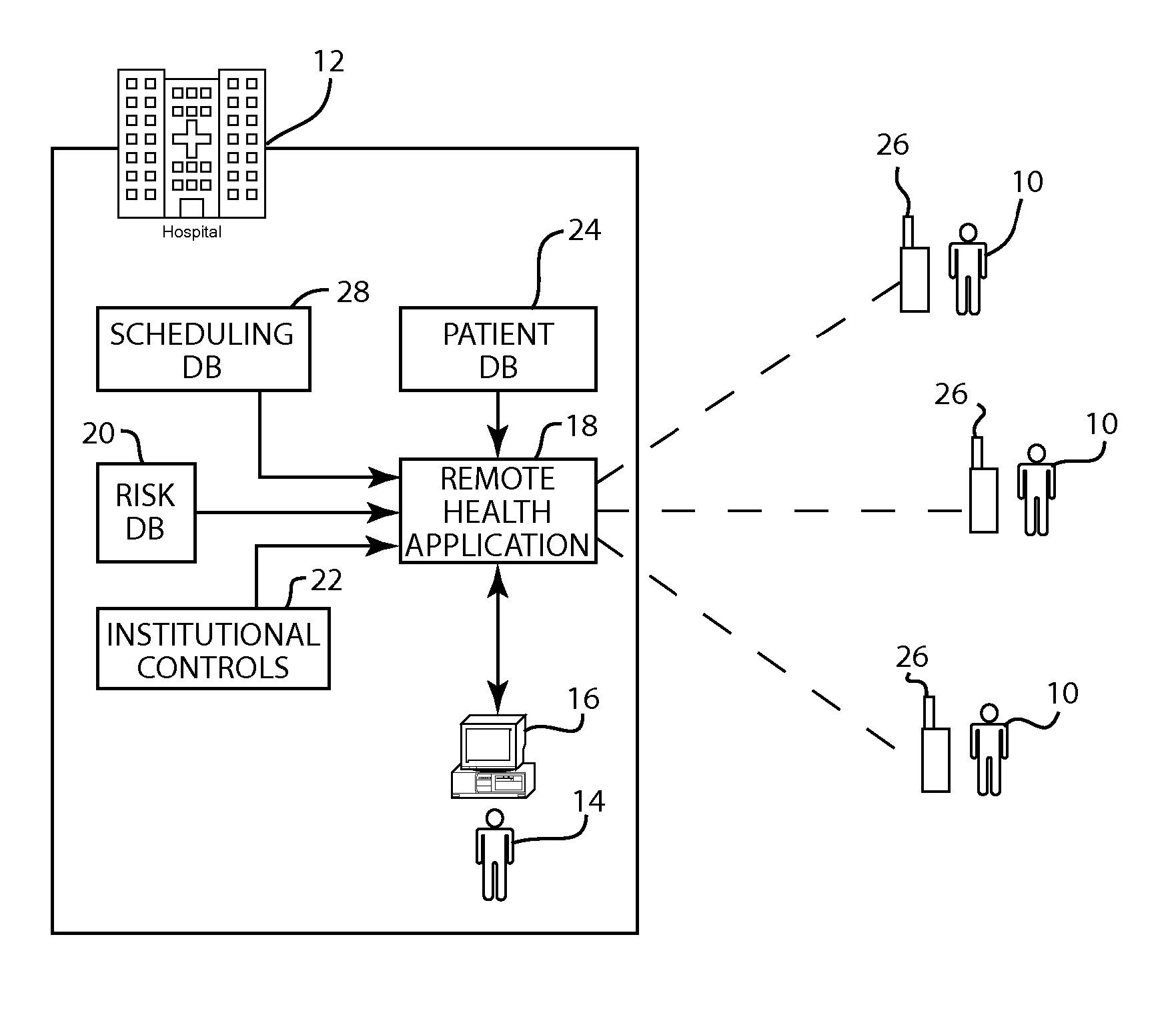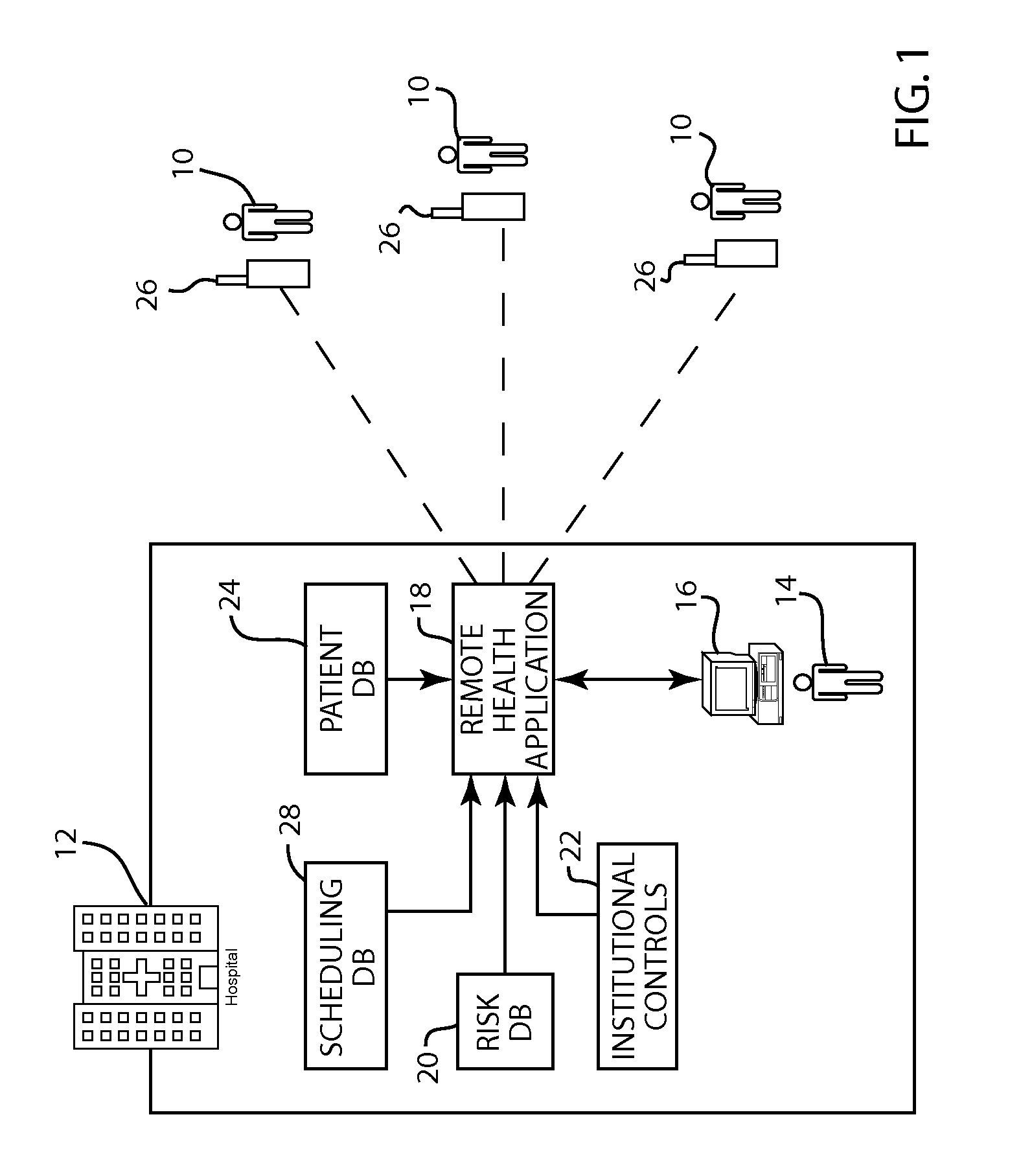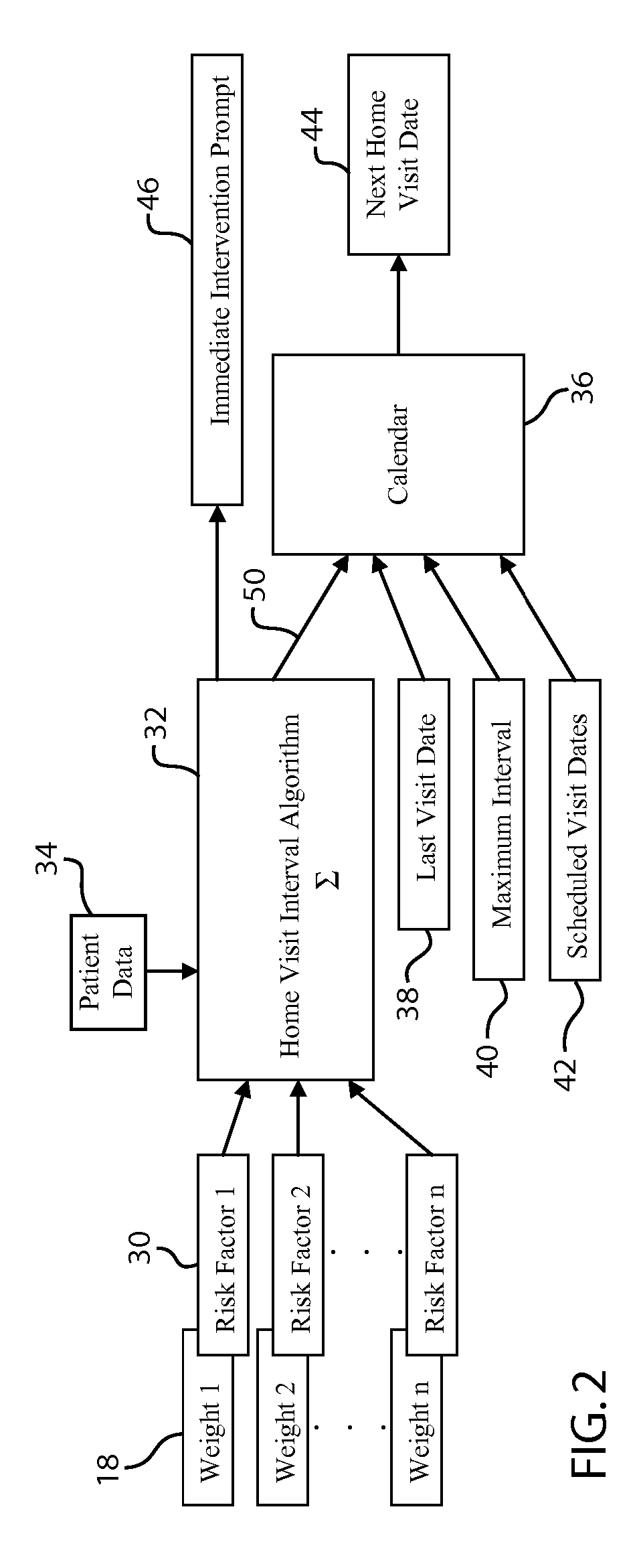Remote health application for the optimization of remote site visit frequency
a remote site visit and health application technology, applied in the field of remote site visit frequency optimization, can solve the problems of increasing presenting its own significant challenges, and reducing the return rate of clinician/patient interactions, and achieving the effect of reducing the cost of health car
- Summary
- Abstract
- Description
- Claims
- Application Information
AI Technical Summary
Problems solved by technology
Method used
Image
Examples
Embodiment Construction
[0017]FIG. 1 depicts a schematic diagram of a situation in which an embodiment of the present invention may be utilized. In FIG. 1, a plurality of remotely located patients 10 are each at a location that is different from each other and all are remote from the clinical institution 12. The clinical institution 12 may be a regional hospital, local clinic, or any other provider of patient care. An on-line clinician 14 at a computer work station 16 within the clinical institution 12 monitors the scheduling of visits by a clinician (not depicted) to each remotely located patient 10. The remote health application 18 of the present invention receives information from a variety of sources, such as patient data, risk factors, and scheduling information, for determining the proper schedule for clinician visits to the remotely located patients 10.
[0018] The remote health application 18 uses risk factors from a risk database 20 and other institutionally determined controls 22 for operating the...
PUM
 Login to View More
Login to View More Abstract
Description
Claims
Application Information
 Login to View More
Login to View More - R&D
- Intellectual Property
- Life Sciences
- Materials
- Tech Scout
- Unparalleled Data Quality
- Higher Quality Content
- 60% Fewer Hallucinations
Browse by: Latest US Patents, China's latest patents, Technical Efficacy Thesaurus, Application Domain, Technology Topic, Popular Technical Reports.
© 2025 PatSnap. All rights reserved.Legal|Privacy policy|Modern Slavery Act Transparency Statement|Sitemap|About US| Contact US: help@patsnap.com



